| Class: | angiosperms |
| Order: | Lamiales |
| Family: | Orobanchaceae |
| Genus: | Orobanche |
| Scientific name: | Orobanche coerulescens Steph. ex Willd. |
| Name acc. to: | Gubanov 1996 |
| Herbar: | list records   |
| Synonym: | O. canescens Bunge (acc. to Mem. Sav. Etr. Petersb. 2: 124) |
| Synonym: | O. albo-lanata Steudel (acc. to Nomencl. bot. ed. 2.2: 230) |
| Synonym: | O. ammophila C. A. Mey. (acc. to Ic. Pl. Fl. Ross. IV: 24 t. 389) |
| Synonym: | O. nipponica Makino (acc. to Journ. Japan. Bot. 5 (10): 40) |
| Synonym: | O. mairei Léveillé (acc. to Feddes Repert. 12 (17/21): 285) |
| Synonym: | O. bodinieri Léveillé (acc. to Feddes Repert. 9 (27/31): 451) |
| Synonym: | O. akiana Honda (acc. to Bot. Mag. Tokyo 46: 676) |
| Synonym: | O. japonensis Makino (acc. to Journ. Japan. Bot. 6 (7): 9) |
| Description: | Herbs biennial, 15-40(-50) cm tall, densely villous. Stems erect, unbranched. Leaves ovate-lanceolate, 1.5-2 cm X 5-7 mm, along with bracts and calyx densely villous at margin and abaxially. Inflorescences 10-20 cm; bract similar to leaves; bractlets absent. Calyx 1.2-1.5 cm, 2-parted almost to base; segments divided to half; lobes narrowly lanceolate, 3-5 mm. Corolla dark blue, blue-purple, pale purple, or yellow, 2-2.5 cm; tube constricted, open upward; upper lip 2-lobed, rarely emarginate. Filaments 1.2-1.4 cm, usually villous; anthers ovoid, ca. 2 mm, glabrous. Pistil 1.5-1.7 cm; ovary ellipsoid. Style as long as filaments, usually glabrous; stigma 2-lobed. Capsule ovoid-oblong or oblong, ca. 10 X 4 mm. Seeds irregularly ellipsoid or long ovoid, ca. 0.3 mm. (from Zhang & Tzvelev 1998: 234) |
| Comments: | Hosts: Artemisia, f. e. A. commutata Bess., A. dracunculus L., A. glauca Pall. ex Willd., A. latifolia Ledeb., A. macilenta (Maxim.) Krasch., A. marschalliana Spreng., A. subdigitata Mattf., A. tanacetifolia L., A. tomentella Trautv., A. laciniata Willd., A. sericea Web. ex Stechm. |
| Link to Flora of China: | http://www.efloras.org/browse.aspx?flora_id=2&name_str=Orobanche+coerulescens |
| open map in a new window | 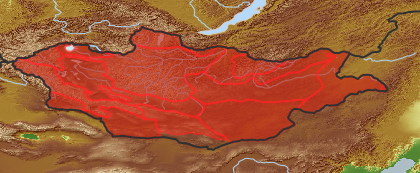 |
| Habitat: | Rocky slopes, mountain steppe, sandy dunes and deserts, sandy riverbanks; on granitic soil, scree and sand, up to 2600 m. (H. Uhlich in this account) |
| Habit (i)general appearance of a plant | |
| Growth form: (i)Herb, shrub, tree or climber. | herb (i)Herbaceous, erect plant, up to 2m high, mostly with a leafy shoot; if perennial, shoots die to the ground each season, shoots are not woody
example: Artemisia pectinata   inherited by family Orobanchaceae: herb inherited by family Orobanchaceae: herb
|
| Parasite status: (i)Is the plant a half- or full parasite? | Full parasite/ saprophyte (i)Full parasites without chlorophyll, entire plant lacking green color, often succulent
example: Cistanche  inherited by genus Orobanche: Full parasite/ saprophyte inherited by genus Orobanche: Full parasite/ saprophyte
Parasite/saprophyte (i)Plant not or not fully autonomous, leaves often without chlorophyll
example: Cuscuta, Corallorhiza, Epipogium (holomycotrophic)c  inherited by genus Orobanche: Parasite/saprophyte inherited by genus Orobanche: Parasite/saprophyte
|
| Water or terrestrial plant: (i)Where do the plants grow? | terrestrial (i)Plant grows on dry land
example: Orostachys spinosa  inherited by family Orobanchaceae: terrestrial inherited by family Orobanchaceae: terrestrial
|
| Leaf (i)expanded, usually photosynthetic organ of a plant (including phylloclades) | |
| Leaf development: (i)Structure and development of leaves. | with green leaves (i)Plant with green leaves  inherited by family Orobanchaceae: with green leaves inherited by family Orobanchaceae: with green leaves
without green leaves (i)Plant at flowering time (some geophytes) or over its whole life (many parasites) with reduced leaves without chlorophyll
example: Colchicum, Cuscuta, a lot of parasites  inherited by family Orobanchaceae: without green leaves inherited by family Orobanchaceae: without green leaves
needles or scales (i)Leaves short, broad more or less adjacent to axis (scales)) or acicular (needles)
example: Pinus (needles), Cupressus, Ephedra (scales)   inherited by family Orobanchaceae: needles or scales inherited by family Orobanchaceae: needles or scales
|
| Leaf veination: (i)Arrangement of the main veins of a leaf. | pinnate (i)One main vein, several side veins, sometimes inconspicuous
example: Cicerbita     inherited by family Orobanchaceae: pinnate inherited by family Orobanchaceae: pinnate
|
| Flower (i)reproductive portion of the plant, consisting of sepals, petals, stamens, and pistils | |
| Flower appearance and pollination: (i)General appearance of the flower. | attractive, animal-pollinated (i)attractive and coloured flowers, mostly large, attracting surely animals
example: Trollius, Rosa, Chamaerhodos  inherited by family Orobanchaceae: attractive, animal-pollinated inherited by family Orobanchaceae: attractive, animal-pollinated
|
| Flower colour: (i)Attention: assess colour of the most colourful parts of the flower, but not of the stamens; be aware of single plants with a mutation (mostly white) on flower colour. | yellow to orange (i)Pale to golden yellow
example: Ranunculus, Crepis
purple to violet (i)All colors between purple and violet, often changing with flower age
example: Pulmonaria
blue (i)Bluish colours with mixture to red to deep blue
example: Myosotis, Dracocephalum
|
| Perianth arrangement: (i)Attention: in some plants, flowers may be dimorphic in different ways (dioecious or gynodioecious). If flowers vary, record the characters of the most showy flowers. | double, different (i)Two types of perianth leaves, differently coloured (sepals: outer periant leaves, usually greenish, and petals: inner perianth leaves, usually coloured)
example: Parnassia    inherited by family Orobanchaceae: double, different inherited by family Orobanchaceae: double, different
|
| Length of flower: (i)For zygomorphic flowers only, instead of diameter of flower. | from 21 mm to 30 mm
|
| Flower symmetry: (i)Symmetry of the perianth leaves. Attention: to assess this character, look on sepals, petals and stamens, but neglect carpels and ovary. | zygomorphic (i)One axis of symmetry, monosymmetrical flowers
example: Pedicularis, Nepeta, Viola     inherited by family Orobanchaceae: zygomorphic inherited by family Orobanchaceae: zygomorphic
|
| Flower form: (i)common forms of flowers ? Veronica | bilabiate (i)Petals froming two lips, flower usually zygomorphic
example: Lamiaceae, Scrophulariaceae p.p.   inherited by family Orobanchaceae: bilabiate inherited by family Orobanchaceae: bilabiate
|
| Sepal number: (i)Number of sepal leaves (outer perianth leaves, calyx leaves, mostly greenish). Attention, this character applies only for flowers separated in sepals and petals, thus excluding most monocots. Be aware of the bracts (involucral leaves) of Asteraceae flowerheads, do not qualify these as sepals! Be also aware in Rosaceae is often an epicalyx developed, in this case count all parts. | 2 (i)
example: Papaveraceae  inherited by family Orobanchaceae: 2 inherited by family Orobanchaceae: 2
3 (i)
example: Baldellia, Alisma  inherited by family Orobanchaceae: 3 inherited by family Orobanchaceae: 3
4 (i)
example: Sinapis  inherited by family Orobanchaceae: 4 inherited by family Orobanchaceae: 4
5 (i)
example: Polemonium  inherited by family Orobanchaceae: 5 inherited by family Orobanchaceae: 5
|
| Petal / Tepal number: (i)Number of petal leaves (inner perianth leaves, usually coloured). | 4 (i)
example: Galium  inherited by family Orobanchaceae: 4 inherited by family Orobanchaceae: 4
5 (i)
example: Potentilla  inherited by family Orobanchaceae: 5 inherited by family Orobanchaceae: 5
|
| Petal / Tepal fusion: (i)To which degree are the petal leaves connected? Petals sympetalous. | fused (i)petal leaves united, only tips are free (gamopetalous, sympetalous)
example: Linnaea, Adenophora, Stellera  inherited by family Orobanchaceae: fused inherited by family Orobanchaceae: fused
|
| Stamen number: (i)Attention: We ask for the reproductive organs of the flower dispersing pollen. Count only fully fertile stamens, not staminodia (e.g. Parnassia). | 4 (i)Extremely rare, may be absent
example: Plantago  inherited by family Orobanchaceae: 4 inherited by family Orobanchaceae: 4
5 (i)
example: Peucedanum  inherited by family Orobanchaceae: 5 inherited by family Orobanchaceae: 5
|
| Stamen fusion: (i)To which degree are the stamens fused? Attention: Whereas the pollen sacs itself are often free., their stalks (filaments) may be fused. Here, we count them as fused if they are together over at least one thirth of their length. | fused with a corolla (calyx in Thymelaeaceae) (i)Stamens with perianth leaves at least one third of the length of the filament
example: Orobanche, Salvia, Stellera  inherited by genus Orobanche: fused with a corolla (calyx in Thymelaeaceae) inherited by genus Orobanche: fused with a corolla (calyx in Thymelaeaceae)
|
| Style number: (i)Portion of the pistil connecting the stigma to the ovary. | 1  inherited by family Orobanchaceae: 1 inherited by family Orobanchaceae: 1
|
| Stigma number per style: (i)Number of stigmas per style. | 1 (i)One stigma, sessile or with a developed style  inherited by family Orobanchaceae: 1 inherited by family Orobanchaceae: 1
2 (i)Two stigmas, resulting from two fused carpels with or without developed style   inherited by family Orobanchaceae: 2 inherited by family Orobanchaceae: 2
|
| Ovary position: (i)For entirely or partly fused carpels, describe their position in relation to the insertion point of perianth leaves (best done by doing a longitudinal section of a flower). | superior (hypogynous) (i)Base of carpels attached above insertion point of perianth leaves, carpels free or fused
example: Delphinium, Anemone    inherited by family Orobanchaceae: superior (hypogynous) inherited by family Orobanchaceae: superior (hypogynous)
|
| Sex: (i)Distribution of male and female organs among flowers, only most commonly cases. | bisexual, hermaphrodite (i)All or nearly all flowers of a plant with male and female parts
example: Haplophyllum, Chenopodium  inherited by family Orobanchaceae: bisexual, hermaphrodite inherited by family Orobanchaceae: bisexual, hermaphrodite
|
| Inflorescence (i)flowering part of a plant, describes the arrangement of the flowers on the flowering axis | |
| Inflorescence: (i)Structure of the inflorescence. | Flowers in inflorescence (i)No solitary flowers  inherited by family Orobanchaceae: Flowers in inflorescence inherited by family Orobanchaceae: Flowers in inflorescence
|
| Appearance: (i)Outer look of the inflorescence. | terminal (i)Inflorescence is the highest point of the plant and may consist of a single flower only
example: Cypripedium, Rhaponticum, Ligularia sibirica, Echinops  inherited by family Orobanchaceae: terminal inherited by family Orobanchaceae: terminal
|
| Inflorescence type: (i)Types of inflorescence. Attention: We here ask for the botanical nomenclature of inflorescences, which is sufficiently complicated. Tick only, if you are certain, or tick all inflorescence types that appear similar of these of the plant in question. | spike (spadix) (i)All flowers sessile and crowded along a main axis, there may be several spikes on a shoot; sometimes axis thickened (spadix)
example: Plantago, Carex vesicaria, Vicia, Typha (spadix)    inherited by family Orobanchaceae: spike (spadix) inherited by family Orobanchaceae: spike (spadix)
raceme (i)Stalked flowers arranged along a simple main axis, often one by one in the axils of leaves, maturing from bottom upwards
example: Aconitum barbatum   inherited by family Orobanchaceae: raceme inherited by family Orobanchaceae: raceme
|
| Fruit (i)the seed bearing organ, with or without adnate parts; a ripened ovary and any other structures which are attached and ripen with it. Aggregate fruits are handled like simple fruits for determination. | |
| Consistency: (i)Fleshy fruits or dry fruits, see dispersal adaptations for further classification. | dry (i)With a dry outer shell, no fleshy parts, but seed (embryo) could be edible  inherited by family Orobanchaceae: dry inherited by family Orobanchaceae: dry
|
| Type of fruit: (i)Common fruit types (including pseudocarp). | Solitary fruits (i)     inherited by family Orobanchaceae: Solitary fruits inherited by family Orobanchaceae: Solitary fruits
capsule (i)Dry dehiscent fruit, releasing seeds by slits or holes.
example: Poppy, most Caryophyllaceae, Cerastium, a lot of Scrophulariaceae, Iris (oppened capsule looks like Delphinium), Zygophyllum - it is a very common fruit type     inherited by family Orobanchaceae: capsule inherited by family Orobanchaceae: capsule
Dehiscent fruits (i)Fruits open along a longitudinale line (except silicula)  inherited by family Orobanchaceae: Dehiscent fruits inherited by family Orobanchaceae: Dehiscent fruits
|
| Root / shoot below ground (i)plant part below ground (in most cases), including below ground shoots, without leaves | |
| Root type: (i)Organisation of the roots. | allorhizous (i)Plant with a conspicuous tap root, one larger tap root with side roots
example: Dicotyledonae  inherited by order Lamiales: allorhizous inherited by order Lamiales: allorhizous
|
| Distribution (i)region where the plant is likely to be found | |
| Distribution (Veg. Zones): (i)acc. to Grubov 1952 | Khubsgul (i)In distribution data often named as '1' 
Khentei (i)In distribution data often named as '2' 
Khangai (i)In distribution data often named as '3' 
Mongol-Daurian (i)In distribution data often named as '4' 
Great Khingan (i)In distribution data often named as '5' 
Khobdo (i)In distribution data often named as '6' 
Mongolian Altai (i)In distribution data often named as '7' 
Middle Khalkha (i)In distribution data often named as '8' 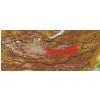
East Mongolia (i)In distribution data often named as '9' 
Depression of Great Lakes (i)In distribution data often named as '10' 
Valley of Lakes (i)In distribution data often named as '11' 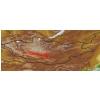
East Gobi (i)In distribution data often named as '12' 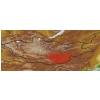
Gobi-Altai (i)In distribution data often named as '13' 
Dzungarian Gobi (i)In distribution data often named as '14' 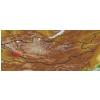
Transaltai Gobi (i)In distribution data often named as '15' 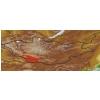
|
| Distribution Khangay: (i)acc. Flora Khangaya 1989 | IV
VI
|
| Phenology (i)flowering and fruting period | |
| Flowering Period: (i)Period of the year the plant is flowering | June
July
August
|